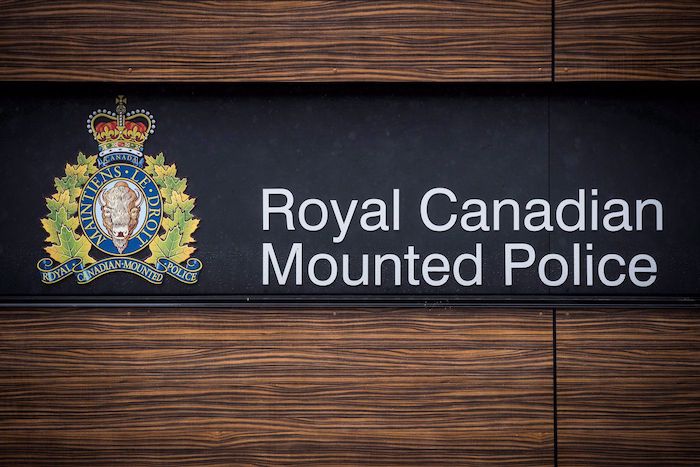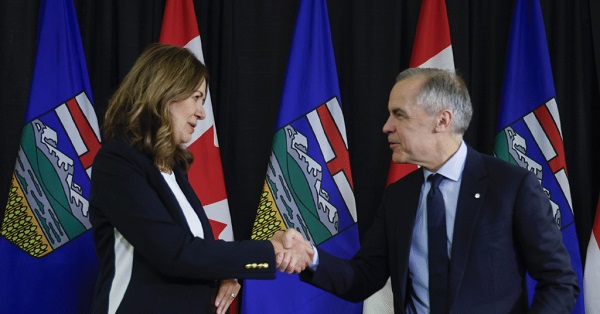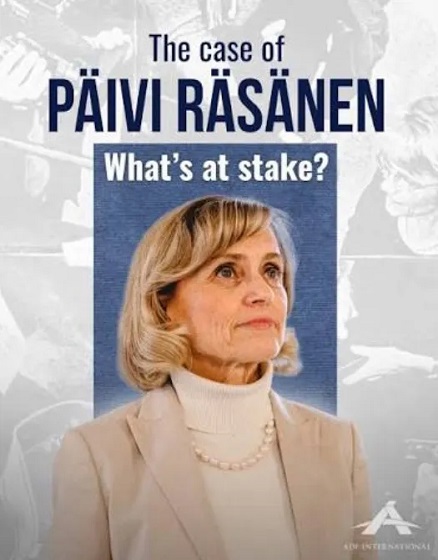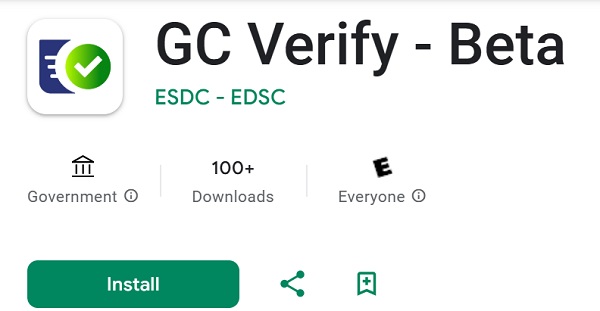Alberta
Province introduces civilian oversight of RCMP in Alberta: Committees to oversee RCMP service delivery

Alberta’s government is making sure communities have a say in how they are policed by the RCMP.
Ensuring Albertans are kept safe is a priority for Alberta’s government, which is why it introduced and passed the Police Amendment Act, 2022 in the fall session of 2022. This important piece of legislation is strengthening RCMP ties to the communities they serve and improving police accountability by mandating civilian governance bodies for municipalities policed by the RCMP. An order in council for the legislation was signed today, with the new regulations coming into force March 1, 2025.
The creation of the municipal and regional policing committees and the Provincial Police Advisory Board will ensure large and small municipalities have a role in setting province-wide policing priorities and performance goals for the RCMP to ensure service delivery reflects and addresses local needs.
The changes coming into force through the amendments and new regulations represent a collaborative effort on the part of municipalities, the RCMP and Alberta’s government to improve public safety in communities throughout the province.
“By creating new civilian governance bodies, we’re responding to Albertans’ long-standing desire for more say in how the RCMP police their communities while advancing a paradigm shift that sees local police across the province as an extension and a reflection of the communities they serve. Unique communities have unique public safety priorities and the creation of civilian governance bodies will address this issue. Creating mandatory civilian governance bodies also ensures accountability, as officers will be held responsible for their actions and behaviour.”
“Amendments to the Police Act support your Alberta RCMP’s ongoing efforts to ensure that communities have a strong voice in their policing priorities. In particular, it will assist our work on local resourcing, responding to calls for mental health and addictions issues, targeting prolific offenders, and dealing with hate crimes. The Alberta RCMP welcomes any changes or enhancements to oversight and governance that help us meet the needs of the communities we serve.”
“Our association’s 265-member communities welcome the provincial government’s effort to build stronger ties between the RCMP and the communities they serve. We hope these policing committees and the Provincial Police Advisory Board lead to improved public safety in communities throughout Alberta.”
Municipal and regional policing committees
Communities with municipal policing contracts and populations of more than 15,000 will be required to appoint municipal policing committees to oversee RCMP service delivery for their area. These committees will work with elected municipal officials to set policing priorities for the community, report on initiatives to support those goals, and create safety plans with their local RCMP detachments, authorities and agencies.
RCMP-policed communities with populations between 5,000 and 15,000 will be represented by regional policing committees to which they will be required to recruit and appoint members. These civilian committees will represent the interests and concerns of the public to the RCMP leadership in their district, work with local officials to identify and address public safety concerns for their region, and report on the implementation of programs and services to address them.
The Provincial Police Advisory Board
Small and rural communities policed by the RCMP with populations under 5,000 will be represented by a new advisory board. The Provincial Police Advisory Board will represent the interests and concerns of Albertans in these communities, support integrated safety planning and liaise with Alberta’s government, the RCMP and municipalities to align policing priorities and resources to help address local concerns and challenges. The 15-person board will include dedicated seats for representatives from Alberta Municipalities, Rural Municipalities of Alberta, and First Nations and Métis communities, as well as community representation for each of the province’s RCMP districts.
Quick facts
- The Police Amendment Act, 2022 received royal assent on Dec. 15, 2022, with the aim of improving police accountability, strengthening ties with communities and enhancing public confidence by reforming existing policing practices.
- The Police Amendment Act, 2022 made a number of amendments to the Police Act, including the creation of civilian governance bodies in jurisdictions policed by the RCMP.
- The Public Safety Statutes Amendment Act, 2024 received royal assent on May 16, and included amendments that allow for the regulation of municipal police committee memberships.
- Both the Police Amendment Act, 2022 amendments and the new regulations created to support these municipal and regional civilian governance bodies will come into force on March 1, 2025.
Related information
Alberta
Alberta Next Panel calls to reform how Canada works

From the Fraser Institute
By Tegan Hill
The Alberta Next Panel, tasked with advising the Smith government on how the province can better protect its interests and defend its economy, has officially released its report. Two of its key recommendations—to hold a referendum on Alberta leaving the Canada Pension Plan, and to create a commission to review programs like equalization—could lead to meaningful changes to Canada’s system of fiscal federalism (i.e. the financial relationship between Ottawa and the provinces).
The panel stemmed from a growing sense of unfairness in Alberta. From 2007 to 2022, Albertans’ net contribution to federal finances (total federal taxes paid by Albertans minus federal money spent or transferred to Albertans) was $244.6 billion—more than five times the net contribution from British Columbians or Ontarians (the only other two net contributors). This money from Albertans helps keep taxes lower and fund government services in other provinces. Yet Ottawa continues to impose federal regulations, which disproportionately and negatively impact Alberta’s energy industry.
Albertans were growing tired of this unbalanced relationship. According to a poll by the Angus Reid Institute, nearly half of Albertans believe they get a “raw deal”—that is, they give more than they get—being part of Canada. The Alberta Next Panel survey found that 59 per cent of Albertans believe the federal transfer and equalization system is unfair to Alberta. And a ThinkHQ survey found that more than seven in 10 Albertans feel that federal policies over the past several years hurt their quality of life.
As part of an effort to increase provincial autonomy, amid these frustrations, the panel recommends the Alberta government hold a referendum on leaving the Canada Pension Plan (CPP) and establishing its own provincial pension plan.
Albertans typically have higher average incomes and a younger population than the rest of the country, which means they could pay a lower contribution rate under a provincial pension plan while receiving the same level of benefits as the CPP. (These demographic and economic factors are also why Albertans currently make such a large net contribution to the CPP).
The savings from paying a lower contribution rate could result in materially higher income during retirement for Albertans if they’re invested in a private account. One report found that if a typical Albertan invested the savings from paying a lower contribution rate to a provincial pension plan, they could benefit from $189,773 (pre-tax) in additional retirement income.
Clearly, Albertans could see a financial benefit from leaving the CPP, but there are many factors to consider. The government plans to present a detailed report including how the funds would be managed, contribution rates, and implementation plan prior to a referendum.
Then there’s equalization—a program fraught with flaws. The goal of equalization is to ensure provinces can provide reasonably comparable public services at reasonably comparable tax rates. Ottawa collects taxes from Canadians across the country and then redistributes that money to “have not” provinces. In 2026/27, equalization payments is expected to total $27.2 billion with all provinces except Alberta, British Columbia and Saskatchewan receiving payments.
Reasonable people can disagree on whether or not they support the principle of the program, but again, it has major flaws that just don’t make sense. Consider the fixed growth rate rule, which mandates that total equalization payments grow each year even when the income differences between recipient and non-recipient provinces narrows. That means Albertans continue paying for a growing program, even when such growth isn’t required to meet the program’s stated objective. The panel recommends that Alberta take a leading role in working with other provinces and the federal government to reform equalization and set up a new Canada Fiscal Commission to review fiscal federalism more broadly.
The Alberta Next Panel is calling for changes to fiscal federalism. Reforms to equalization are clearly needed—and it’s worth exploring the potential of an Alberta pension plan. Indeed, both of these changes could deliver benefits.
Alberta
Alberta’s new diagnostic policy appears to meet standard for Canada Health Act compliance

From the Fraser Institute
By Nadeem Esmail, Mackenzie Moir and Lauren Asaad
In October, Alberta’s provincial government announced forthcoming legislative changes that will allow patients to pay out-of-pocket for any diagnostic test they want, and without a physician referral. The policy, according to the Smith government, is designed to help improve the availability of preventative care and increase testing capacity by attracting additional private sector investment in diagnostic technology and facilities.
Unsurprisingly, the policy has attracted Ottawa’s attention, with discussions now taking place around the details of the proposed changes and whether this proposal is deemed to be in line with the Canada Health Act (CHA) and the federal government’s interpretations. A determination that it is not, will have both political consequences by being labeled “non-compliant” and financial consequences for the province through reductions to its Canada Health Transfer (CHT) in coming years.
This raises an interesting question: While the ultimate decision rests with Ottawa, does the Smith government’s new policy comply with the literal text of the CHA and the revised rules released in written federal interpretations?
According to the CHA, when a patient pays out of pocket for a medically necessary and insured physician or hospital (including diagnostic procedures) service, the federal health minister shall reduce the CHT on a dollar-for-dollar basis matching the amount charged to patients. In 2018, Ottawa introduced the Diagnostic Services Policy (DSP), which clarified that the insured status of a diagnostic service does not change when it’s offered inside a private clinic as opposed to a hospital. As a result, any levying of patient charges for medically necessary diagnostic tests are considered a violation of the CHA.
Ottawa has been no slouch in wielding this new policy, deducting some $76.5 million from transfers to seven provinces in 2023 and another $72.4 million in 2024. Deductions for Alberta, based on Health Canada’s estimates of patient charges, totaled some $34 million over those two years.
Alberta has been paid back some of those dollars under the new Reimbursement Program introduced in 2018, which created a pathway for provinces to be paid back some or all of the transfers previously withheld on a dollar-for-dollar basis by Ottawa for CHA infractions. The Reimbursement Program requires provinces to resolve the circumstances which led to patient charges for medically necessary services, including filing a Reimbursement Action Plan for doing so developed in concert with Health Canada. In total, Alberta was reimbursed $20.5 million after Health Canada determined the provincial government had “successfully” implemented elements of its approved plan.
Perhaps in response to the risk of further deductions, or taking a lesson from the Reimbursement Action Plan accepted by Health Canada, the province has gone out of its way to make clear that these new privately funded scans will be self-referred, that any patient paying for tests privately will be reimbursed if that test reveals a serious or life-threatening condition, and that physician referred tests will continue to be provided within the public system and be given priority in both public and private facilities.
Indeed, the provincial government has stated they do not expect to lose additional federal health care transfers under this new policy, based on their success in arguing back previous deductions.
This is where language matters: Health Canada in their latest CHA annual report specifically states the “medical necessity” of any diagnostic test is “determined when a patient receives a referral or requisition from a medical practitioner.” According to the logic of Ottawa’s own stated policy, an unreferred test should, in theory, be no longer considered one that is medically necessary or needs to be insured and thus could be paid for privately.
It would appear then that allowing private purchase of services not referred by physicians does pass the written standard for CHA compliance, including compliance with the latest federal interpretation for diagnostic services.
But of course, there is no actual certainty here. The federal government of the day maintains sole and final authority for interpretation of the CHA and is free to revise and adjust interpretations at any time it sees fit in response to provincial health policy innovations. So while the letter of the CHA appears to have been met, there is still a very real possibility that Alberta will be found to have violated the Act and its interpretations regardless.
In the end, no one really knows with any certainty if a policy change will be deemed by Ottawa to run afoul of the CHA. On the one hand, the provincial government seems to have set the rules around private purchase deliberately and narrowly to avoid a clear violation of federal requirements as they are currently written. On the other hand, Health Canada’s attention has been aroused and they are now “engaging” with officials from Alberta to “better understand” the new policy, leaving open the possibility that the rules of the game may change once again. And even then, a decision that the policy is permissible today is not permanent and can be reversed by the federal government tomorrow if its interpretive whims shift again.
The sad reality of the provincial-federal health-care relationship in Canada is that it has no fixed rules. Indeed, it may be pointless to ask whether a policy will be CHA compliant before Ottawa decides whether or not it is. But it can be said, at least for now, that the Smith government’s new privately paid diagnostic testing policy appears to have met the currently written standard for CHA compliance.

Lauren Asaad
Policy Analyst, Fraser Institute
-

 International2 days ago
International2 days agoAustralian PM booed at Bondi vigil as crowd screams “shame!”
-

 Uncategorized2 days ago
Uncategorized2 days agoMortgaging Canada’s energy future — the hidden costs of the Carney-Smith pipeline deal
-

 Opinion2 days ago
Opinion2 days agoReligion on trial: what could happen if Canada passes its new hate speech legislation
-

 Automotive1 day ago
Automotive1 day agoCanada’s EV gamble is starting to backfire
-

 Alberta21 hours ago
Alberta21 hours agoAlberta Next Panel calls to reform how Canada works
-

 Digital ID12 hours ago
Digital ID12 hours agoCanadian government launches trial version of digital ID for certain licenses, permits
-

 Agriculture22 hours ago
Agriculture22 hours agoEnd Supply Management—For the Sake of Canadian Consumers
-

 Business11 hours ago
Business11 hours agoThe “Disruptor-in-Chief” places Canada in the crosshairs






